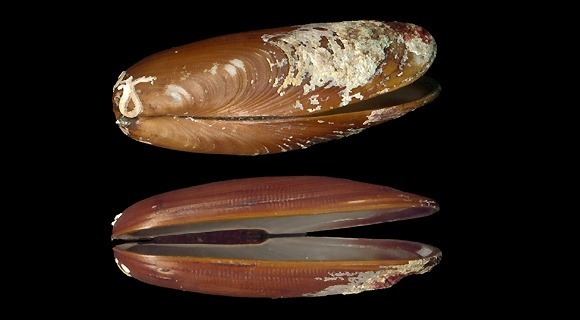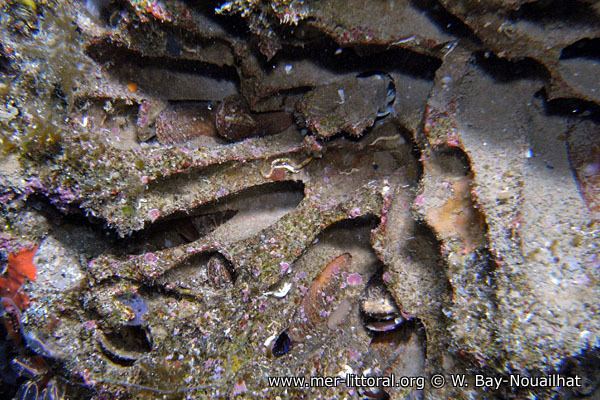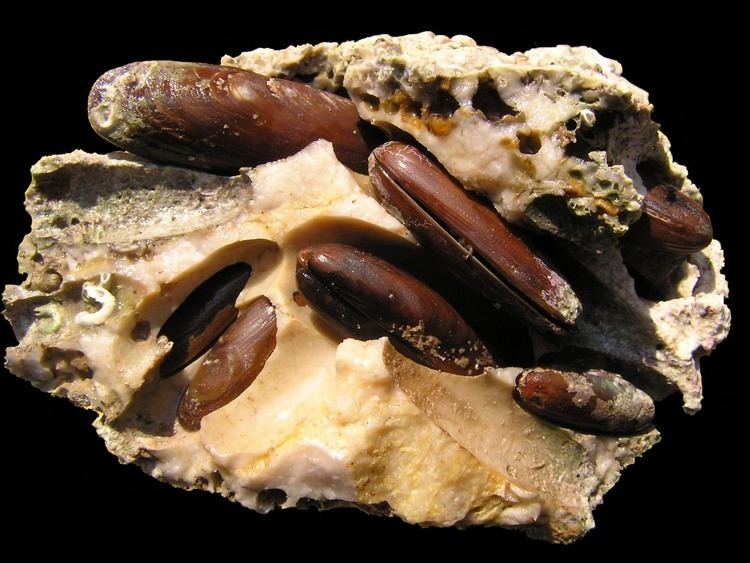Subclass Pteriomorphia Rank Species | Order Mytiloida Genus Lithophaga Higher classification Lithophaga | |
 | ||
Similar Lithophaga, Bivalvia, Molluscs, Pinna nobilis, Smooth clam | ||
Gopro 3 dattero di mare lithophaga lithophaga
Lithophaga lithophaga, also known as date shell or date mussel, is a species of Bivalvia belonging to the family Mytilidae.
Contents
- Gopro 3 dattero di mare lithophaga lithophaga
- Fossil record
- Distribution
- Habitat and biology
- Description
- Human culture
- Commercial collection
- References

Fossil record

Fossils of Lithophaga lithophaga are found in marine strata from the Miocene until the Quaternary (age range: from 15.97 to 0.0 million years ago).
Distribution

This species can be found in northeast Atlantic Ocean, the Mediterranean Sea and the Red Sea. They are found on the Adriatic coast of Croatia and Montenegro under the name prstaci.
Habitat and biology

These bivalves live mainly in the area battered by the waves, but they can reach depths of 125 to 200 m. They bore into marine rocks, producing a boring called Gastrochaenolites. Their growth is very slow, and to reach the 5 cm length, they requires 15 to 35 years. They feed on plankton, algae and debris by filtering them from the water. They reach the sexual maturity after about two years. The number of eggs that are released in a season reach about 120,000 to about 4.5 million. The fertilization takes place in the open water.
Description

Shells of Lithophaga lithophaga can reach a length of about 8.5 centimetres (3.3 in). They are yellowish or brownish, almost cylindrical, rounded at both ends. The interior is whitish iridescent purple with a pink tinge. These shells are relatively thin. The surface is nearly smooth, covered with growth lines, which sometimes can be quite rough.
Human culture
Historically these shells are considered a delicacy, cooked and served in a broth of white wine, garlic and parsley.
Commercial collection
Several governments have restricted the collection of these shells or even made it wholly illegal, in order to protect the rocks on which they are found. The extraction of the shells from the rocks leads to desertification of the coast. These countries include Croatia, Italy, Slovenia, France, Greece, Montenegro, and others, including participants in the Convention on the Conservation of European Wildlife and Natural Habitats (Bern Convention) and the Convention on International Trade in Endangered Species of Wild Fauna and Flora (CITES). As of 2004, its population distributed over the Turkish coastline is not considered to be under threat.
